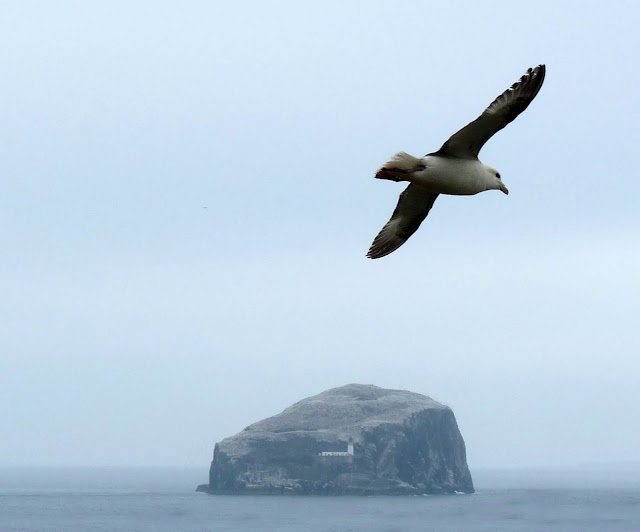 Puffins again!
Puffins again!A year ago I much enjoyed reading
Sea Room, a
book about the
Shiant Islands by
Adam Nicolson, who inherited the small archipelago from his father. Those who follow my blog posts will not be surprised to learn that the
Puffins were among the star members of the cast for me - all 240 000 of them. It came as something of a shock, though, to read that some of these Amber Conservation Status birds ended up - and not so long ago - as food for humans.

Last month, we spent a happy afternoon at the Museum of Island Life at Kilmuir on Skye [above]. This fabulous museum is situated between Flora MacDonald's grave and the cool waters of the Minch.*


The visibility was quite good on the day of our visit: we watched a Golden Eagle hovering above us in the distance, and noticed some very strange landforms out at sea.


We looked at our map and discovered that these islands, a mere 12 miles from our shore, were indeed the Shiant Islands.


Above: the stone in the foreground is on Skye.
The Shiants are in the middle distance.
Harris lies beyond.

Above: close-up of the Shiant Island rock structure,
with steep column-like cliffs.

The islands consist of columns of Dolerite, and
geologically are more akin to Staffa [of Fingal's Cave] than to the plethora of rock types found on Skye. They are home to huge colonies of
Black Rats.
It may only be early August, but already the trees are turning here in South Wales, and there are signs of autumn. I have just read the update on the Skomer Island blog, informing us that following the fledging of this year's Pufflings, members of the Puffin colony have already left their island off the coast of Pembrokeshire for their winter voyage. You can read about them
here. I find it incredible to think of these birds travelling so far north ... and then south again!
* On a previous visit we witnessed a scene of the purest light we have ever seen. It may not have been the
aurora borealis, but it was the next best thing.














 The London Eye,
The London Eye,

 What lies beneath these ripples on the loch?
What lies beneath these ripples on the loch?







 The Archive Room [where Linear B tablets were found], Palace of Nestor, son of Neleus at sandy Pylos
The Archive Room [where Linear B tablets were found], Palace of Nestor, son of Neleus at sandy Pylos A Linear B tablet, listing religious offerings of olive oil.
A Linear B tablet, listing religious offerings of olive oil.



 Gateway to Hull, The Humber Bridge
Gateway to Hull, The Humber Bridge The reflection in this lamp post
The reflection in this lamp post 


